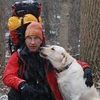Night Shoot
Apr 9, 2013 15:05:35 #
Hi guys.
I am thinking about doing my first night shoot, for example star trails and light painting, long exposures on the coast, has anybody got any decent tips please, I have a Nikon D7000.
Many main concern is how can I properly focus at night when its pitch black, what is the best ISO and F number.
I have a large number of lenses covering from 10mm to 300 and ranging from f2.5 to 4.5.
Any tips would be much appreciated.
Best regards
Moggey
I am thinking about doing my first night shoot, for example star trails and light painting, long exposures on the coast, has anybody got any decent tips please, I have a Nikon D7000.
Many main concern is how can I properly focus at night when its pitch black, what is the best ISO and F number.
I have a large number of lenses covering from 10mm to 300 and ranging from f2.5 to 4.5.
Any tips would be much appreciated.
Best regards
Moggey
Apr 9, 2013 15:20:53 #
Check out the astronomical photography forum. There is GREAT info there!! Please be sure to post your shots so we can see how you did. Have fun and good luck.
Apr 9, 2013 15:26:19 #
moggey wrote:
Hi guys.
I am thinking about doing my first night shoot, for example star trails and light painting, long exposures on the coast, has anybody got any decent tips please, I have a Nikon D7000.
Many main concern is how can I properly focus at night when its pitch black, what is the best ISO and F number.
I have a large number of lenses covering from 10mm to 300 and ranging from f2.5 to 4.5.
Any tips would be much appreciated.
Best regards
Moggey
I am thinking about doing my first night shoot, for example star trails and light painting, long exposures on the coast, has anybody got any decent tips please, I have a Nikon D7000.
Many main concern is how can I properly focus at night when its pitch black, what is the best ISO and F number.
I have a large number of lenses covering from 10mm to 300 and ranging from f2.5 to 4.5.
Any tips would be much appreciated.
Best regards
Moggey
have a look at these mate they where done with a canon 550 eos - f13 /100 iso /30sec shutter speed- with tripod - stable & auto focus off http://www.uglyhedgehog.com/t-64056-1.html :thumbup:
Apr 9, 2013 15:36:52 #
moggey wrote:
Hi guys.
I am thinking about doing my first night shoot, for example star trails and light painting, long exposures on the coast, has anybody got any decent tips please, I have a Nikon D7000.
Many main concern is how can I properly focus at night when its pitch black, what is the best ISO and F number.
I have a large number of lenses covering from 10mm to 300 and ranging from f2.5 to 4.5.
Any tips would be much appreciated.
Best regards
Moggey
I am thinking about doing my first night shoot, for example star trails and light painting, long exposures on the coast, has anybody got any decent tips please, I have a Nikon D7000.
Many main concern is how can I properly focus at night when its pitch black, what is the best ISO and F number.
I have a large number of lenses covering from 10mm to 300 and ranging from f2.5 to 4.5.
Any tips would be much appreciated.
Best regards
Moggey
Star trails focus on infinity, iso 800 good tripod same for constellations
http://www.lightstalking.com/how-to-photograph-star-trails
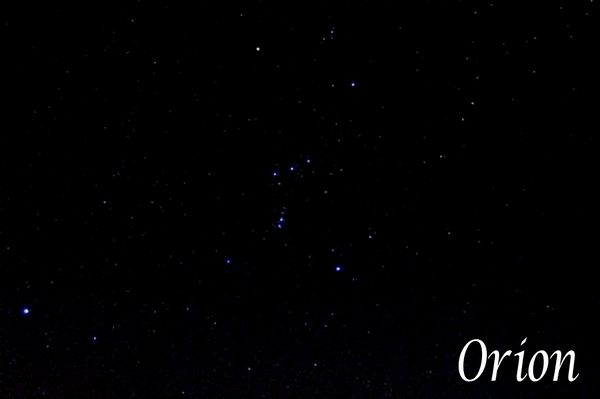
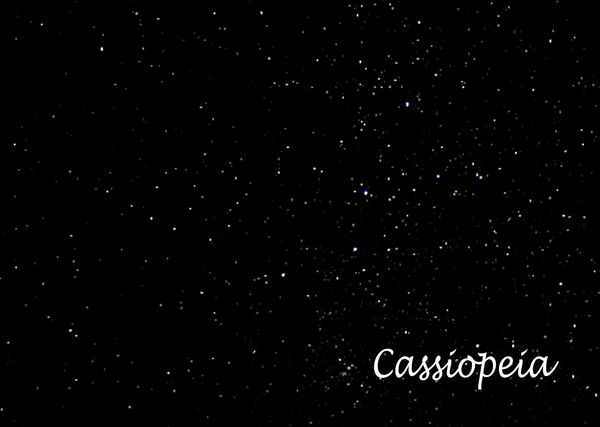
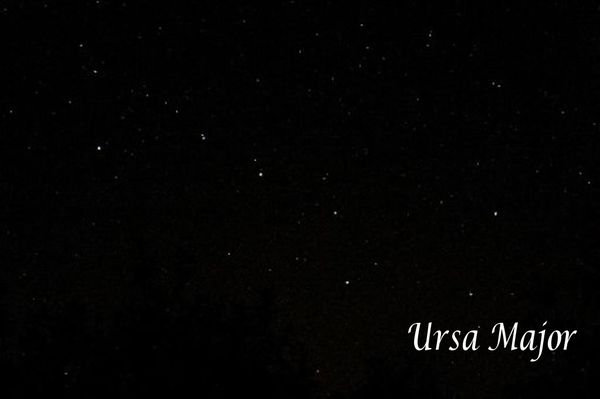
Apr 9, 2013 19:58:28 #
moggey wrote:
Hi guys.
I am thinking about doing my first night shoot, for example star trails and light painting, long exposures on the coast, has anybody got any decent tips please, I have a Nikon D7000.
Many main concern is how can I properly focus at night when its pitch black, what is the best ISO and F number.
I have a large number of lenses covering from 10mm to 300 and ranging from f2.5 to 4.5.
Any tips would be much appreciated.
Best regards
Moggey
I am thinking about doing my first night shoot, for example star trails and light painting, long exposures on the coast, has anybody got any decent tips please, I have a Nikon D7000.
Many main concern is how can I properly focus at night when its pitch black, what is the best ISO and F number.
I have a large number of lenses covering from 10mm to 300 and ranging from f2.5 to 4.5.
Any tips would be much appreciated.
Best regards
Moggey
Lots of variables; try starting out with 2.8 or wider and ISO 100 - 200 and exposure of 20 seconds. View the results, and if needed adjust accordingly. I adjust the shutter first, if 30 seconds won't do it then I boost the iso or aperature, depending on the lens.
I bring a flashlight and shine it on the subject for autofocus, then switch to manual focus before shutting off the light.
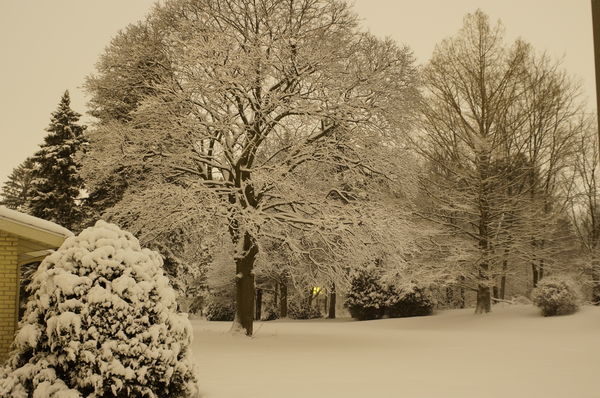
Apr 9, 2013 20:29:42 #
moggey wrote:
Hi guys.
I am thinking about doing my first night shoot, for example star trails and light painting, long exposures on the coast, has anybody got any decent tips please, I have a Nikon D7000.
Many main concern is how can I properly focus at night when its pitch black, what is the best ISO and F number.
I have a large number of lenses covering from 10mm to 300 and ranging from f2.5 to 4.5.
Any tips would be much appreciated.
Best regards
Moggey
I am thinking about doing my first night shoot, for example star trails and light painting, long exposures on the coast, has anybody got any decent tips please, I have a Nikon D7000.
Many main concern is how can I properly focus at night when its pitch black, what is the best ISO and F number.
I have a large number of lenses covering from 10mm to 300 and ranging from f2.5 to 4.5.
Any tips would be much appreciated.
Best regards
Moggey
Moggey, you may be at infinity but there is no way to know where that is since all auto focus lenses travel beyond infinity. If you have live view(LV), put the lens on manual and enlarge to biggest power and focus manually. If the is something bright to focus on, you can auto focus then turn auto off so it won't move. W/O LV you just have to do the best you can through the viewfinder. You also need to shoot full manual or the camera won't shoot if underexposed. Then just chimp till your happy. For close objects you could use a light meter to get you into the ballpark a little quicker.
But just chimp away till all is good. Hope this helps.
Apr 10, 2013 07:49:52 #
Hi Guys
Thank you all for your advice, Briace/JR1 there are some great shots there.
There is a mention of focus on infinity, can you elaborate on this please.
Many thanks
Thank you all for your advice, Briace/JR1 there are some great shots there.
There is a mention of focus on infinity, can you elaborate on this please.
Many thanks
Apr 10, 2013 11:36:08 #
SharpShooter wrote:
Moggey, you may be at infinity but there is no way to know where that is since all auto focus lenses travel beyond infinity.
This may be a silly question to you but how does something focus 'beyond' infinity?
The English word infinity derives from Latin infinitas, which can be translated as "unboundedness", itself derived from the Greek word apeiros, meaning "endless"
Apr 10, 2013 11:41:30 #
D7000 has live view focussing, use ISO 400 to 1600, open aperture f2.8, Shutter speed 15-20 seconds, good tripod, and Vello wireless shutter control
Apr 10, 2013 11:44:55 #
Apr 10, 2013 11:45:32 #
moggey wrote:
Hi guys.
I am thinking about doing my first night shoot, for example star trails and light painting, long exposures on the coast, has anybody got any decent tips please, I have a Nikon D7000.
Many main concern is how can I properly focus at night when its pitch black, what is the best ISO and F number.
I have a large number of lenses covering from 10mm to 300 and ranging from f2.5 to 4.5.
Any tips would be much appreciated.
Best regards
Moggey
I am thinking about doing my first night shoot, for example star trails and light painting, long exposures on the coast, has anybody got any decent tips please, I have a Nikon D7000.
Many main concern is how can I properly focus at night when its pitch black, what is the best ISO and F number.
I have a large number of lenses covering from 10mm to 300 and ranging from f2.5 to 4.5.
Any tips would be much appreciated.
Best regards
Moggey
This is from a tips card I made for myself.
Night Photography
Nighttime formula. Tripod. Use the M setting on the camera, low ISO, f/8, 1" (1 sec). Experiment with shutter speed.
Blue Hour. Within an hour before sunrise and after sunset - nautical twilight. After sunset, the sky will turn gray.
Then it will turn deep blue. The camera will detect the blue before your eye, so click away. Point camera 90 - 180
degrees away from the sun. Low ISO, f/8, 3 or 4 seconds. Experiment. Small aperture is good for landscape. Go to
www.photoephemeris.com
to get sunrise/sunset/twilight times.
Fireworks. Arrive early. Have a small falshlight handy. Low ISO, auto white balance, f/8 and expose for 2 seconds
and up. Focus on infinity, or prefocus manually and leave it that way. Try totally unfocusing. Try tapping a tripod
leg during exposure.
Histogram. left - dark; right - light. Lots of bars to the right - washed out; bars to the left - totally black.
Lightning. ISO 400, f/8, 6 seconds. Or try ISO 200, f/11, 10 seconds.
Lit-up Building. If a building is lit by some kind of light, make a longer exposure, 8 sec, with a small aperture, f/11.
This will expose for the building, rather than the bright lights. If the scene has incandescent lights, set the WB to
tungsten.
Moon. Best to shoot it the night before it is full, when the moon rises before sunset. Low ISO, f/16 or f/22, 1/100 -
1/25. Experiment. Use a longer lens, over 100mm. For a full moon alone in the sky, try f/11 at 1/100. For a smaller
moon, use a slower shutter.
Moon - Eclipse. Low ISO, f/11, 1/100, 1/125. As the moon gets darker, vary shutter speed, then open up lens a stop
or two.
Painting with Flash. This should be done with as little ambient light as possible. Set the camera to a moderate lens opening, say f/5.6. Set the shutter to Bulb and open it. Using a handheld flash, approach the subject and fire the
flash from different positions.
Painting with Light. Turn off noise reduction. Low ISO, f/16, several minutes, as you move the light around. If you
are shining the light directly at the camera, a small light will do. If you are lighting an object with light, you will
need a bright light. Use all sizes and colors of lights. Try a combination of streaks of light and straight illumination.
Shutter Activation. Use the camera's timer, a wireless remote, or a wired remote.
Starburst effect. Use the smallest aperture. Number of star lines depends on shutter construction.
Stars. Low ISO, f/5.6 - f/4, 5 seconds and up. This will result in some blur. 1/15 is about as low as you can go for
star photography without showing star movement. Using an ISO of 6400 will allow for a shutter speed of 1/15.
Exposing for ten minutes or more will result in star trails. A 20 minute exposure including the North star will result
in concentric circles with the North star in the center.
Traffic, etc. In an area with moving lights, expose for maybe 30 sec, with a small aperture.
Experiment. Vary everything. Try very high shutter speeds for lights, drive at night in a car with camera pointed
ahead, unfocus, change perspective, change lenses, change ISO.
Apr 10, 2013 11:48:34 #
Crwiwy wrote:
This may be a silly question to you but how does something focus 'beyond' infinity?
The English word infinity derives from Latin infinitas, which can be translated as "unboundedness", itself derived from the Greek word apeiros, meaning "endless"
The English word infinity derives from Latin infinitas, which can be translated as "unboundedness", itself derived from the Greek word apeiros, meaning "endless"
A number of things come into play here. Because of the temperature, the components of the lens will expand or contract, so lens manufacturers allow for focus beyond infinity. Also, because of lens and camera manufacturing tolerances, the manufacturers allow for the focus beyond infinity to guarantee the lens will focus at infinity. Theory vs. reality, nothing in life is black and white.
Apr 10, 2013 13:32:30 #
Apr 10, 2013 21:55:40 #
Apr 11, 2013 02:35:43 #
Crwiwy wrote:
This may be a silly question to you but how does something focus 'beyond' infinity?
The English word infinity derives from Latin infinitas, which can be translated as "unboundedness", itself derived from the Greek word apeiros, meaning "endless"
The English word infinity derives from Latin infinitas, which can be translated as "unboundedness", itself derived from the Greek word apeiros, meaning "endless"
Crwiwy, is this a trick question?
I'm not implying that you are focusing on something that is farther than infinity. Only that your lens will travel beyond that point.
The reasons stated previously by another poster are probably all valid, but when your lens hunts for focus in the dark it will travel beyond its focus capabilities in both directions. This keeps it from coming to hard stops at the ends of its travel.
The difference between infinity and out of focus is so small, it's nearly impossible to actually set a lens to it by using the markings. I hear it on this site all the time. When shooting the moon just put it on infinity. I've tried it. I'm sure many here can do it but I can't. Try it then check your live view at max magnification. It almost always needs at least a minute adjustment.
But you probably already know all this. Maybe some don't.
If you want to reply, then register here. Registration is free and your account is created instantly, so you can post right away.







